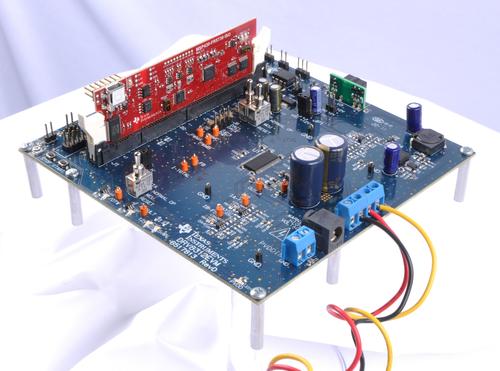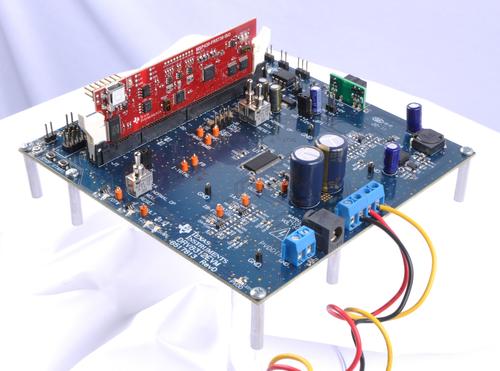Motor Kits Let BLDC Designs Roll
September 14, 2012

If your design plans include a need for a brushless DC (BLDC) motor, I recommend you start with a motor drive development kit. Drive methods and techniques vary according to the processing power required and the mechatronic specifications. A kit lets you and your colleagues experiment with and test motor control algorithms and drive electronics.
Many engineers think they can simply connect a motor to a controller and worry only about the mechanical part of the product's design. Not so. BLDC motor controls usually need some tweaks and adjustments to get the needed performance. Development kits serve as good code development and testing tools.
To help engineers get off to a quick start, Texas Instruments has four new motor-control kits that drive three-phase BLDC motors. Each kit includes a microcontroller from the 16-bit low-power MSP430 family, the 32-bit ARM-based Hercules safety family, or the Stellaris family. Each kit also includes a BLDC motor. Engineers and product designers can choose the appropriate controlCARD MCU module and connect it to a TI motor-driver board with the voltage and current specifications they need.
In addition to driving a motor, the driver circuits monitor cycle-by-cycle over-current, over-temperature, cross-conduction, and under-voltage situations. This photo shows the DRV8312EVM motor-driver board and an attached controlCARD (FR5739) for an MSP430 MCU.

BLDC motors come in two forms: sensored and sensorless. The sensored BLDC motors have built-in fixed Hall-effect sensors that detect the magnetic field of the rotor as it spins. A controller will use this information to determine the rotor position so it can properly commutate (or switch) current to the external coils that cause the rotor to spin. Advantages of sensored BLDC motors include good position control, immediate high torque, and starting up with rotation in the proper direction. Disadvantages usually center on the lifetime of the sensors and the extra cost of sensor connection cables.
Sensorless BLDC motor controllers determine the rotor position by measuring the back electromotive force (EMF) created in an unenergized motor coil by the rotor. In effect, the BLDC motor acts like a generator. To create the back EMF signal, the motor controller must first move the rotor slightly. As a result, when you start a sensorless BLDC motor, you might notice a small movement of the motor shaft before it starts to rotate in the chosen direction. The controller energizes two of three coils to "jog" the rotor slightly and sense the rotor's position based on the back EMF from the unenergized coil. Then the controller can apply the proper signals to the coils to start the motor. You can see this rotor kick effect here. Once a sensorless motor gets started, it works well.
About the Author(s)
You May Also Like
.jpg?width=300&auto=webp&quality=80&disable=upscale)


